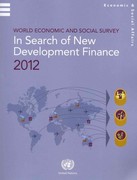Question
1.For the demand and supply functions, Qd= 10 - P, QS= 3P -2, the equilibrium (P0,Q0) is : Select one: a. (5,5) b. (6,4) c.
1.For the demand and supply functions, Qd= 10 - P, QS= 3P -2, the equilibrium (P0,Q0) is :
Select one:
a. (5,5)
b. (6,4)
c. (3,7)
d. (7,3)
2.A firm with total costs TC = 50 + 3Q for Q units of output, which sells its output at price P = 5, breaks even at the output level:
Select one:
a. Q = 50/8
b. Q = 50/3
c. Q = 50/2
d. Q = 45/3
3.The supply function for a product is given by: Qs= 3P - 4. A unit tax t is then imposed on the supplier. The new supply function becomes:
Select one:
a. Q's= 3P - 4 - t
b. Q's= 3P - 4 - 3t
c. Q's= 3(3P - t) - 4
d. Q's= 3P - 4 + t
4.For a firm whose total cost and total revenue functions are given by:
TC = mQ + c, TR = P.Q , which of the following statements is true?
Select one:
a. If fixed costs (c) rise, the break even point will be unchanged
b. If fixed costs (c) fall, the break even point will fall
c. If variable costs per unit (m) increase, the break even point (Q) will fall
d. If price (P) falls, the break even point will fall
5.The function y = f(x) reaches a (relative) minimum where:-
Select one:
a. f '(x) = 0 and f ''(x) < 0
b. f '(x) = 0 and f ''(x) > 0
c. f(x) = 0 and f '(x) < 0
d. f(x) = 0 and f '(x) > 0
Step by Step Solution
There are 3 Steps involved in it
Step: 1

Get Instant Access to Expert-Tailored Solutions
See step-by-step solutions with expert insights and AI powered tools for academic success
Step: 2

Step: 3

Ace Your Homework with AI
Get the answers you need in no time with our AI-driven, step-by-step assistance
Get Started


